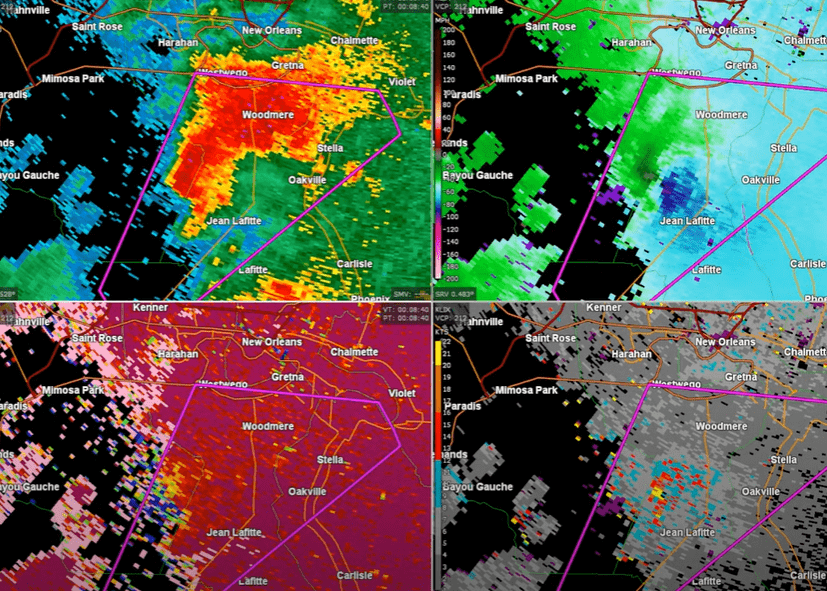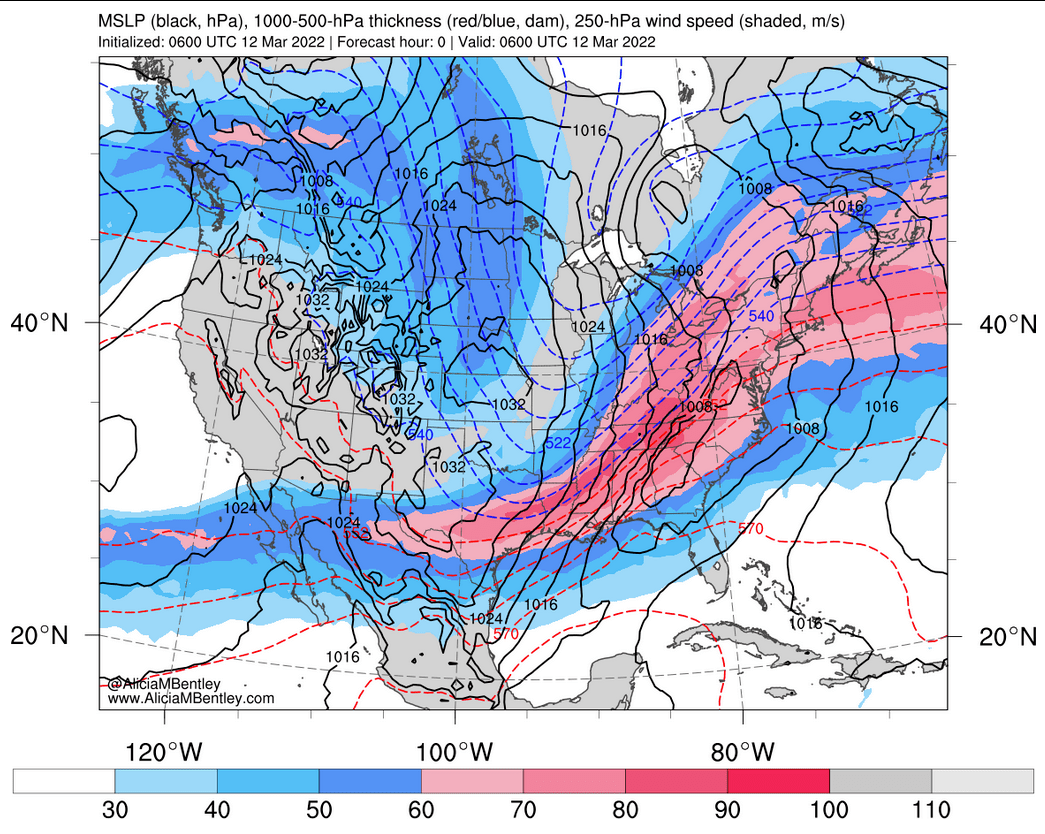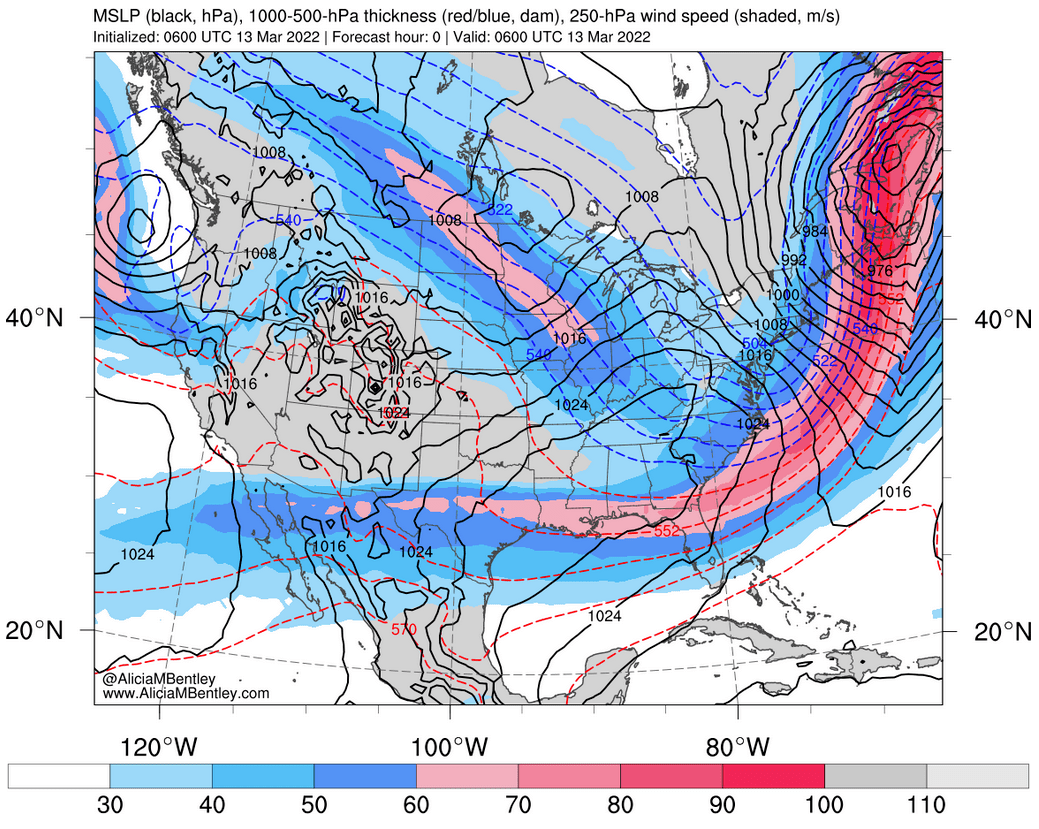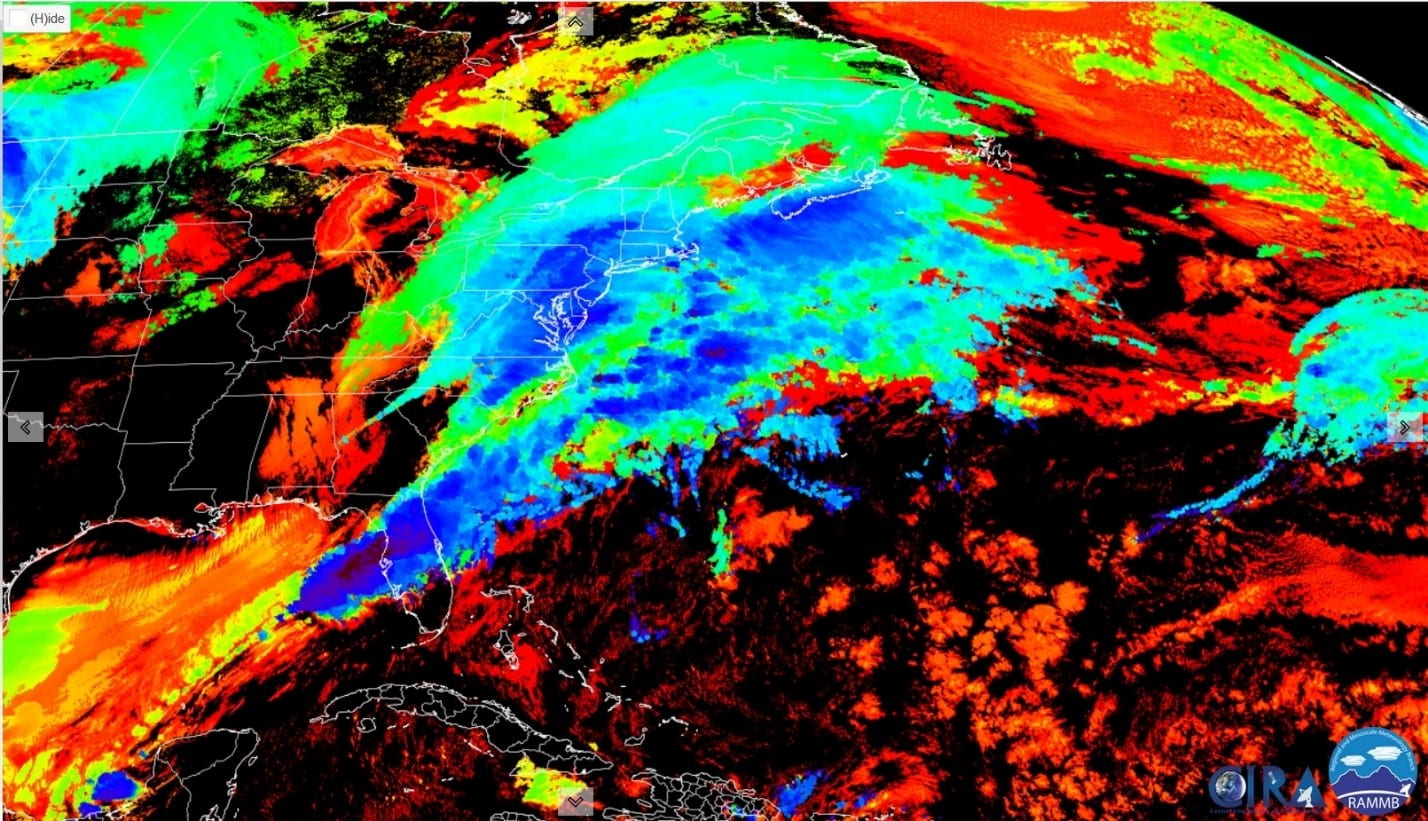If you have spent some time digging around in a radar app that has dual polarization products, you may have come across Differential Reflectivity (ZDR) and not known how to interpret it. For those who may not know, dual polarization radar is a technology that allows for greater interpretation of what is happening in the atmosphere in and around weather. The main thing it allows meteorologists to do is look at both the height and width of objects in the atmosphere. This is shown by the diagram on the right in Figure 1, where we have a beam that is composed of horizontally and vertically polarized beams.

Fig. 1 – Diagram depicting single polarization radar (left) and dual polarization radar (right).
First, let’s get into what exactly ZDR is. It is a dual polarization product (meaning that it uses both the horizontal and vertical beams) that measures the reflectivity return in either direction. It is then converted with a logarithm ratio that will compare the size of the reflectivity return in the horizontal direction to the vertical direction. For those familiar with Correlation Coefficient (CC), another popular dual polarization product, this may seem confusingly similar. However, CC is a correlation coefficient, which means that if we were to have particles with the same deformation, such as being very wide, the CC will return a value of 1 (it has a scale from 0 to 1, going from completely dissimilar to exactly the same).

Fig. 2 – A 4-panel radar image of a tornadic storm with a debris signature and well-defined velocity couplet. Clockwise from top left: Reflectivity (Z), Storm Relative Velocity/Motion (SRM), Differential Reflectivity (ZDR), and Correlation Coefficient (CC).
This is why tornadic debris has a low correlation coefficient, since the various debris types lifted are very dissimilar. ZDR comes in and helps us identify when objects are stretched vertically or horizontally, providing a different view than CC could give. For Figure 2, we can notice how there is a “CC drop” for the bottom right product where the tornado is located. That tells us there are objects that are not similar, but when we look at ZDR we can see exactly how those objects are being moved or deformed as a whole (it is negative, so we know it is being stretched vertically).

Fig. 3 – Reflectivity (left) and Differential Reflectivity (right) scans of a strong storm. There is an updraft column visible in the ZDR image on the right, but only if you know what to look for.
Talking about how ZDR works is worthwhile, since its applications range from hail detection to strong updraft location, finding the melting layer, identifying tornadic debris, determining rain vs. snow, or distinguishing between frozen precipitation types. It will be negative for objects that are stretched vertically (rain in a strong updraft), positive for objects stretched horizontally (rain in freefall), or zero for perfectly spherical objects. A good example is in Figure 3 where the light gray circle, collocated with high levels of precipitation, is a negative return as indicated by the color bar in the top left of the image. This tells us that the rain is elongated vertically, so we can infer that it is caught in a strong updraft.

Fig. 4 – Another 4-panel radar image, this time depicting lighter precipitation surrounding a radar site. You can see the ring created by the melting of frozen precipitation very clearly on ZDR and CC. Clockwise from top right: Reflectivity (Z), Differential Reflectivity (ZDR), Specific Differential Phase (KDP), and Correlation Coefficient (CC).
A final example of the usefulness of ZDR is identifying the melting layer, the height in the atmosphere at which frozen precipitation unfreezes. We know where this is as radar beams shoot up at an angle, intersecting with the atmosphere at an increasing height. The reason it is visible is because frozen precipitation has a shape that is much more spherical, leading to it being very slightly positive (blue/blueish green) on the ZDR scale. However, liquid precipitation is wider than it is tall due to air resistance and reads very positive (reds) for this reason.
There is more that ZDR can do, but it is beyond a basic scope of understanding. This product relies heavily on the user’s interpretation of it and what could be causing it to return that in the atmosphere. So long as you keep in mind what value (positive, negative, or zero) ZDR will return and what they mean, you can put this product to use for yourself in the field.































































